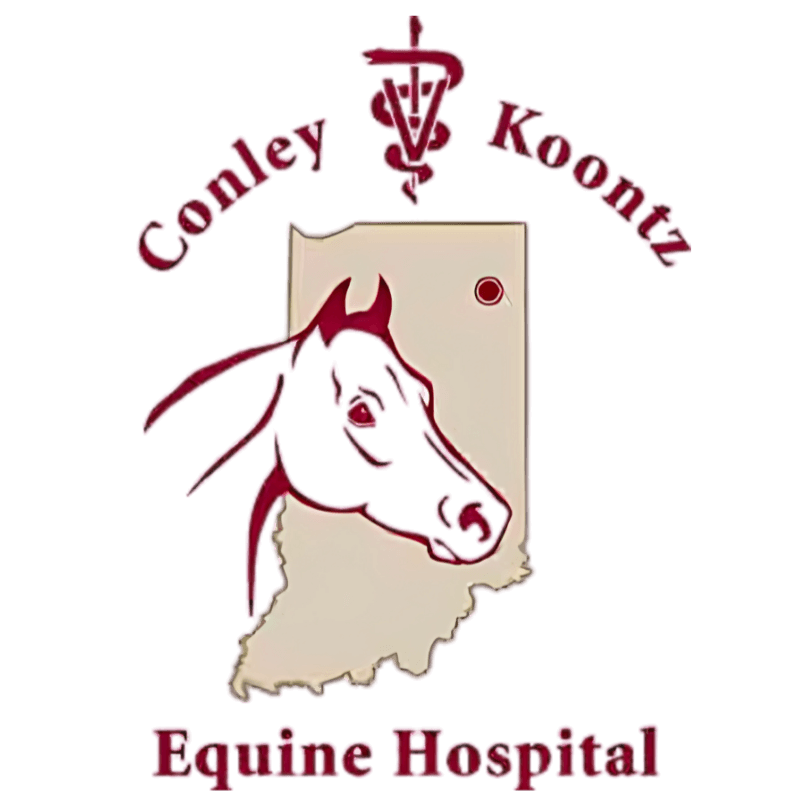Equine Diagnostic Imaging at Conley and Koontz Equine Hospital
Today we're going to talk about diagnostic imaging as it applies to the athletic course. The first thing we have to do is define diagnostic imaging. Diagnostic imaging is exactly what it says. It's images or pictures that we take using different equipment to help us diagnose the problem. It is also important to understand what diagnostic imaging can do and what it cannot do.
What is the three-step process for lameness in horses?
Lameness is a three-step process.
- Step one is figuring out where the horse is lame.
- Step two is figuring out why the horse is lame.
- Step three is treating the lameness.
Diagnostic imaging comes into step two, figuring out why the horse is lame. We can't skip step one. Many owners walk into our hospital and want to skip step one. They say, "Doctor, I want to take an X-ray of his ankle to see if he's lame there." X-rays and ultrasounds are not lameness meters. We can take an X-ray of that ankle, and if we don't find anything, it doesn't mean that he's not lame in that ankle. Or if we do find something, it doesn't mean that he is lame in that ankle. We have to go back to step one and figure out exactly where this horse is lame. That involves doing a physical exam, manipulation tests, and diagnostic nerve blocks. We have to isolate where the lameness is coming from.
How does diagnostic imaging help in figuring out lameness in horses?
Let's say that we isolate the lameness to his ankle. Now, we move on to step two, which is figuring out what is causing the lameness. This is a very important step, and that's when we use diagnostic imaging. We might use X-ray to image bones or joints, or we might use ultrasound to image tendons, ligaments, or muscles. We need to figure out what's causing the lameness, and that's where we use diagnostic imaging.
Why shouldn't I just treat my horse's lameness without an X-ray?
Unfortunately, some veterinarians and some owners want to jump right to step three, which is treatment. When you go to a veterinarian that says, "Well, we're not going to do step one. We're not going to do step two. We're going to move right to step three, and we're just going to inject joints," and that veterinarian injects the knees, ankles, hocks, and stifles on every single horse, they're skipping step one, figuring out where they're lame. They're skipping step two, figuring out what's causing lameness. They're jumping straight to step three, to treatment.
What they're hoping is that if they inject enough joints, they'll hit the right spot and that it will be the appropriate treatment. The problem is, often they are not hitting the right spot, or that is not the appropriate treatment. We have to stick with our steps: figuring out where they're lame, using diagnostic imaging or other modalities to figure out why they're lame. Then we can move to step three, which is appropriate treatment for that particular horse.
Why is a proper diagnosis for my horse's lameness important?
A colleague of mine, Ken Allen, said that in lieu of a diagnosis, surgery is torture, medicine is poison, and alternative medicine is witchcraft. We need a diagnosis. If your horse is lame or not performing well, call us at Conley and Koontz Equine Hospital. We can follow our steps: figure out where they're lame, why they're not performing well, what's causing the lameness, and then proceed to treatment, which has the best chance of getting your horse back to becoming a fine athlete. Give us a call at (877) 499-9909 if your athlete is not performing at their best.
If you live in or near Columbia City, IN, and are looking for horse care, contact us at (877) 499-9909 to set an appointment. You can also email us at [email protected]. Our staff would love to talk with you!
